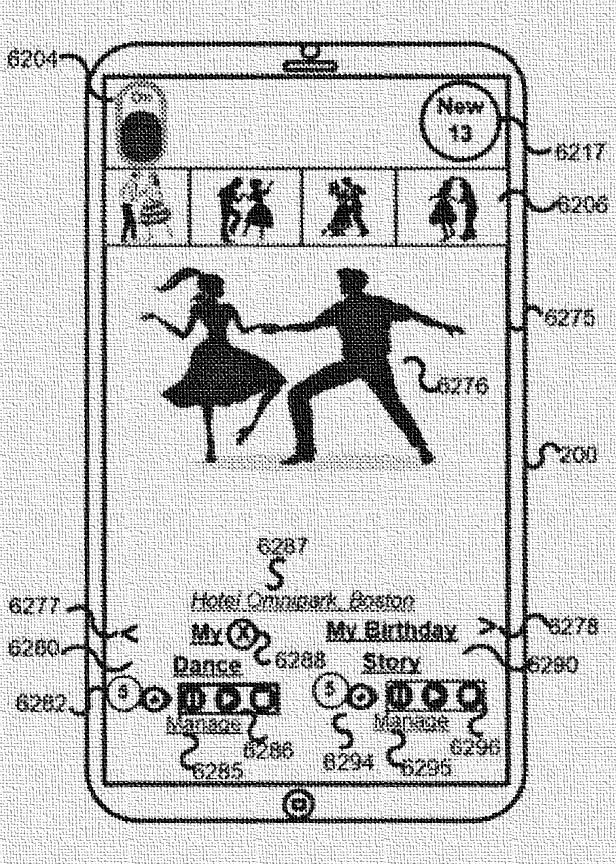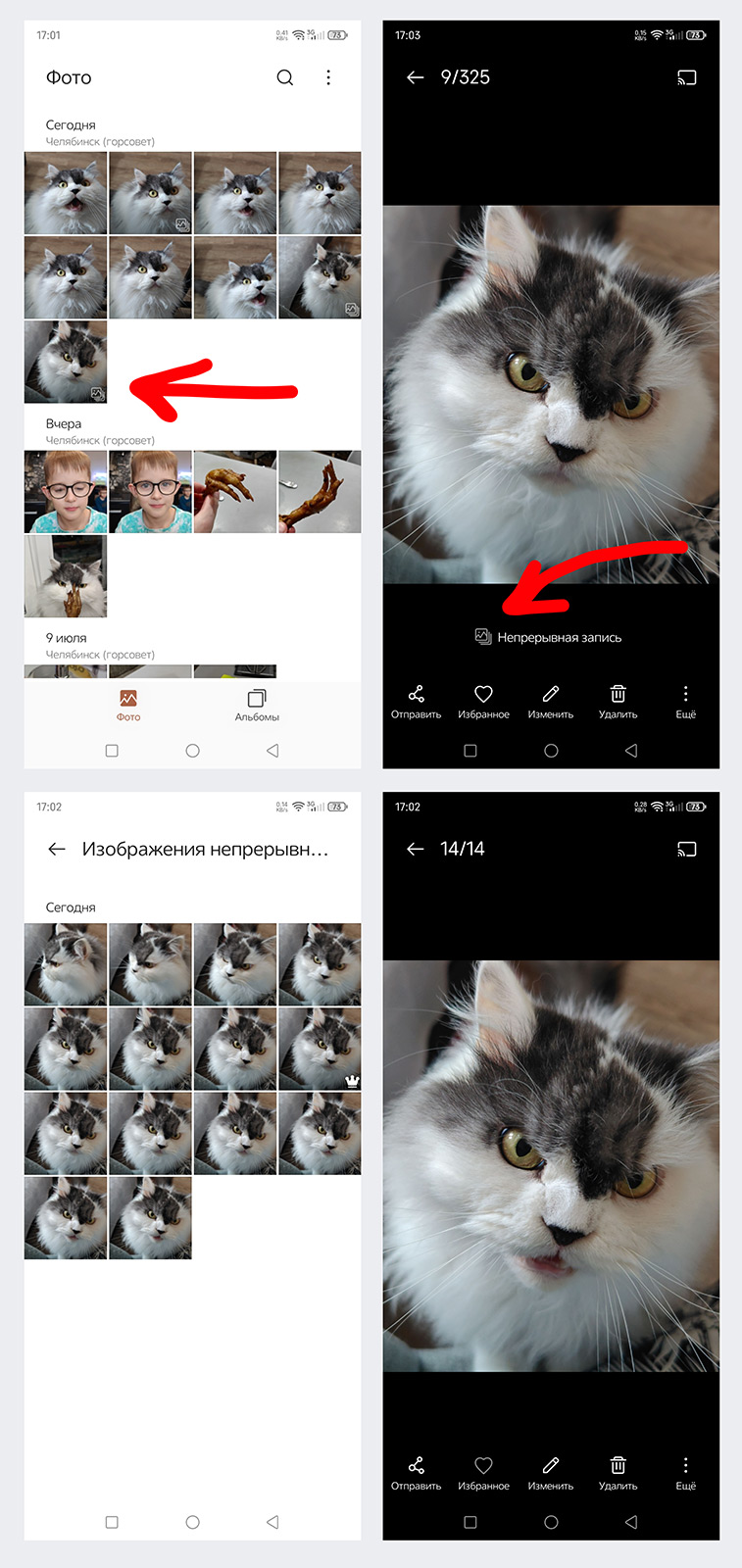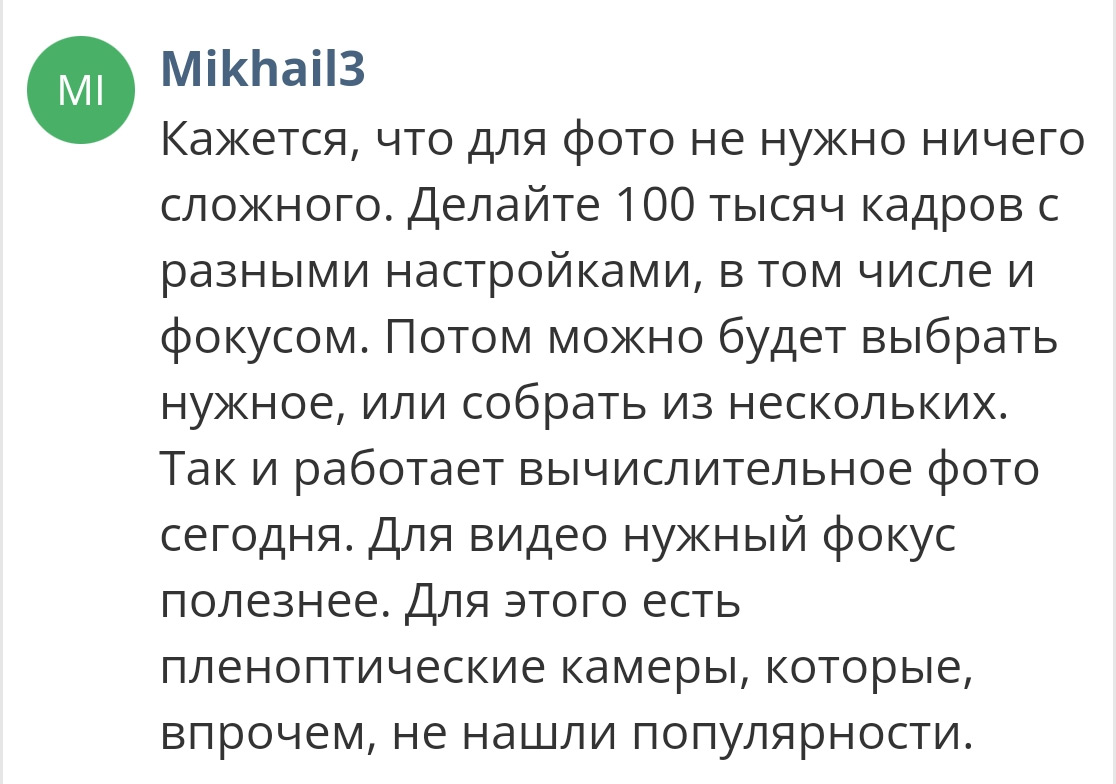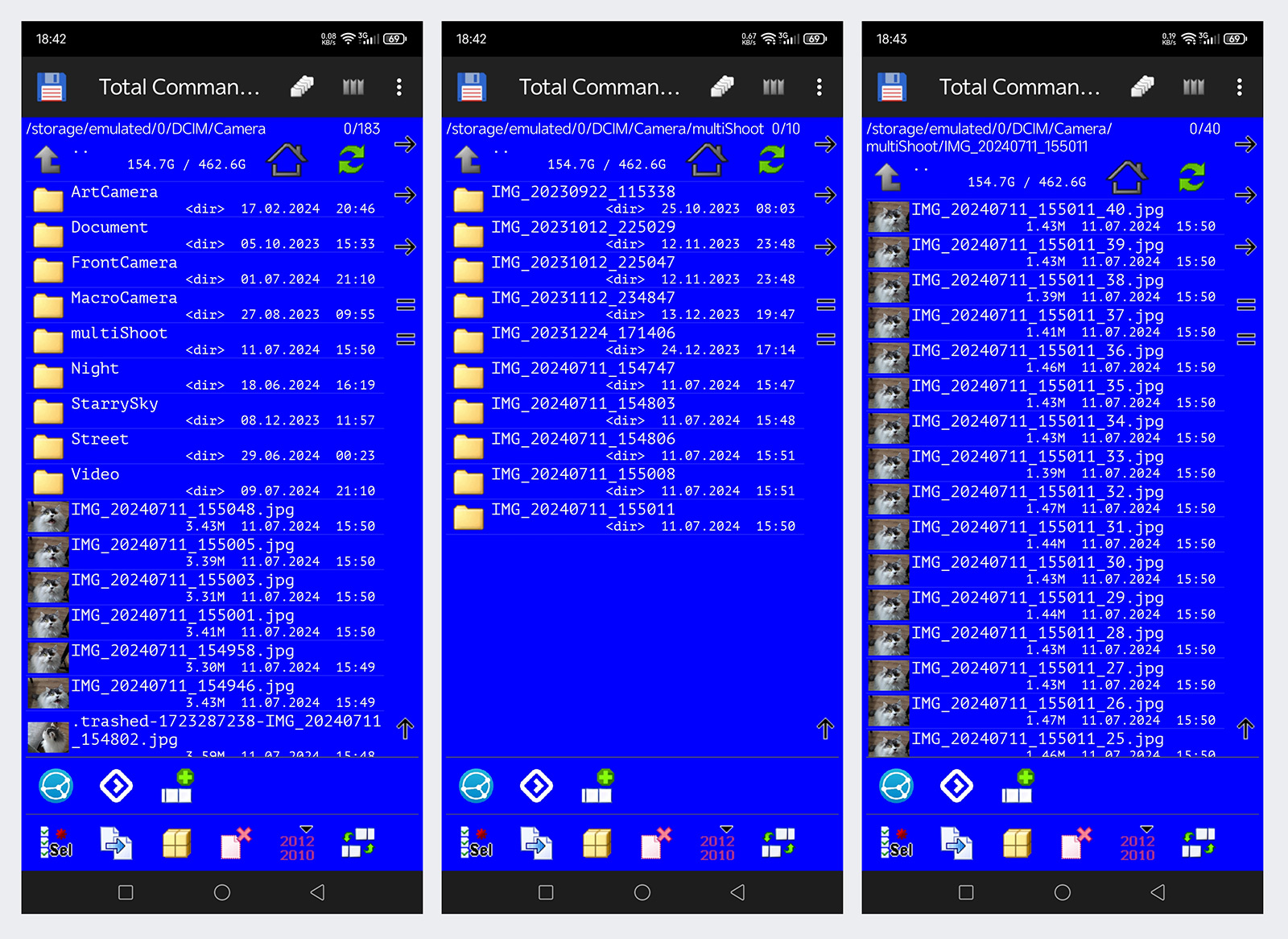Hello.
I must admit that today I evaluate a camera solely by one indicator. By the speed of obtaining a frame after pressing the shutter button. Subsequent use of photos most often does not involve placing them on two-meter posters in art galleries, so the existing resolutions have been sufficient for a long time. Color rendition is perfectly corrected even in automatic mode, filters add the necessary effects, and compression of a photo by social networks smooths out all minor flaws. But what is absolutely frustrating today, as well as several years ago, is the inability to photograph the very moment that the brain imprints in memory. By the way, this is not so much the fault of technology or specific devices, as the inflated expectations of the user himself. After all, the time that passes from the moment the thought of photography comes to mind until pressing the camera button does not depend one hundred percent on the quality of the shooting device. There are also limitations associated with human bodily mechanics. After all, it is not enough to have flagship cameras, you also need to be able to use them quickly. And if we have mastered the “human” part of the process, then purely technical difficulties may arise further. But more about them later. First, let’s discuss the opinions about the fitness app from the last issue.
Feedback
At Corner #40, we were inventing a way to balance the processes of eating and training based on monitoring calories consumed and burned. You can read more about it here:
In the comments, first of all, they pointed out that the system has been implemented for a long time and is present in a number of applications. Including standard ones. However, it is worth noting that the devil is in the details. Moreover, in such details that can give a technical result different from the usual. In the case of our invention, everything is exactly like that. In order not to be unfounded, I will once again emphasize the level of technology of existing applications. Most of the implemented programs display information about activity and nutrition in the form of fillable diagrams. In the form of “rings”, “hearts”, etc. Samsung, as far as I remember, fills a virtual “lemon” with calories from food. But the essence does not change. The established norms of steps, physical activity and calories are a kind of bar. Respected Deodorant noted that Samsung Health is just convenient for navigating the calories eaten / spent. But the problem is that this application does not link these calories to each other. They exist in parallel, although they are components of a single whole. And although the app does differentiate between calories burned during the process of maintaining the body’s performance and those spent as a result of training, there is still no connection with the calories consumed.
User serge recommended looking at Apple, where the Health app analyzes some incredible amount of information and even gives conclusions about the symmetry of movement or the load on each leg. How accurate this data is, we will leave aside. To me, this seems like another extreme. In one case, you literally need to monitor manually, in the other, you don’t even need to think about anything.
The difference of the method we have provided is that these two types of calories are directly linked. Exceeded the planned level of calories – exercise to burn them. While the description was being compiled, another point was missed. It is worth dividing products into healthy and not so healthy, to clearly understand that extra calories from cabbage and from a chocolate bar are different calories. In fact, this is, of course, not true. But grading food by an additional feature could contribute to the consumption of food with the correct glycemic index. The difference is that products with a high glycemic index are broken down faster, sharply increasing the level of glucose in the blood. At the same time, its excess will definitely turn into fat. A distinctive feature of such products is the feeling of hunger that quickly returns after eating them. So let’s add them to the formula:
5. A method for monitoring weight using an application for an electronic device according to paragraph 1 – paragraph 4, characterized in that:
- The system identifies foods that have a high glycemic index.
One of the downsides of the proposed idea was described by Lecron. The gist is that tracking the dynamics of training and food consumption is an artificially created necessity. It is foolish to deny this. Checking notifications, frantically reading the news or updating your mailbox is exactly the same as entering food data and tracking activity. In addition, nutrition and physical activity in relation to the average person without health problems is something that is easily regulated by the body’s built-in mechanisms, and if a person has imbalances, then it is not worth replacing doctors. And again, everything is correct. However, cultivating the habit of monitoring your diet will definitely give a result, and, once formed, it will not require endless adherence to it. Once you accustom your body to the right diet and optimal set of exercises, you can stop monitoring your food. The subconscious itself will tell you the need for training. I think that’s enough. Let’s move on.
Problems
At the beginning, we touched on the problem a little. Now we will talk about it in more detail. So, the right moment. By “right” we mean a situation when, for example, you glanced at a cat, and it was about to yawn. You instantly grabbed your smartphone, activated the camera, but the photo was taken a moment later or earlier, and the wide-open mouth was not captured. In this case, moments may be spent on moving your gaze to the resulting frame, or your hand may move the smartphone and the object will be out of focus, or you may miss the button. And many more “or”s. The example with the cat is far-fetched. Of course, during your time next to it, purely statistically, you will be able to take the right photo. But what if the moment is relatively unique? A trip to another country, for example?
State of the art
This isn’t the first time we’ve come up with a camera solution. We had a piece about manual focus setting, which talked about the extended capabilities of the shutter button. The piece is here:
We also talked about eye tracking to set the focus of a photo on an object that is viewed by the eyes without intermediaries. To avoid that very “Japanese tourist syndrome”. You can read more at the link below:
In principle, a solution with eye tracking for the right frame would also be useful here. The probability of capturing the desired action of an animal by watching it through a viewfinder is more difficult than if you look at it with your own eyes. But pressing the button in time will still not help. What do the achievements in this area offer us?
Live photos. Quite a well-known thing. I think everyone has encountered it. It works quite simply: animation is assembled from several frames after pressing a button:

There are implementation options where you can select the desired frame or set it as the title frame:

The animation above, which features a child, is certainly cute, but the overall feature of live photos is a bit of a bummer, as it can sometimes put people in awkward situations. For example, Serena Kerrigan’s boyfriend, who didn’t expectthat Live Photos would be a great detective tool for his girlfriend:
Another option was suggested in the comments by Mikhail3. The idea boils down to taking multiple photos and then simply choosing the best one. In principle, the idea reflects the approach that gained popularity after the transition from film cameras to digital ones. There are no more restrictions on the number of photos. Take photos of anything as many times as you want, and then simply delete the excess. This has also been described.

Moreover, the implementation has been around for a long time. True, it is not very convenient, in my opinion. In Nubia Z50 Ultra it works as follows: you need to hold down the shutter button, and the pictures will fly one after another. Then you just need to choose the best one:

However, the third-party gallery is less convenient. There is no icon next to the photo notifying about a series of photos. At best, these photos are grouped into separate folders, and at worst, they fall into a common one.
But strictly speaking, the proposal for multiple shots was somewhat different. It described how computational photography works, but something else caught my attention:

Video. What is video? It’s the same frames as a series of shots, only at a much higher speed. When I had Meizu Pro 6 Plus (I still think this smartphone is the best in combination with a fingerprint scanner and a button), I often used the ability to take a photo while recording a video. The quality, however, was terrible. But we are not very interested in the technical implementation. But the ability to choose any frame as a photo will completely remove any issue in the plane of the requirement to “manage to catch the right moment”. The main difficulty is only in the unusual interaction. But I think that this function, even if not in demand by many, will still be useful.
Implementation of the invention
The user observes a situation that requires quick use of an electronic device to take pictures. The user picks up, for example, a smartphone and launches a shooting application. The interface prompts the user to select the “Video” or “Photo” mode. The user selects the “Video” mode. During the shooting process, the user periodically clicks on a separately highlighted icon, the action of which is to capture individual frames of the video. After the shooting is complete, the user goes to the “Gallery” application to view the footage. There is an icon next to the video recording, indicating that there are “bookmarks” for certain frames of the recording. The user views them. Based on these bookmarks, the smartphone software analyzes the frames adjacent to the “bookmark” to identify the most successful one. The number of adjacent frames can be set manually. The selected frames can be saved as separate pictures, subjected to color correction and additional processing.
This solution provides more opportunities to save the necessary frames and opens up more scope for choosing successful images.
Today’s smartphones and software for taking pictures are built with an emphasis on the historical origin of the pictures. But do we really need to take pictures and not videos? After all, you can make pictures from videos, but you can’t make a video from pictures. Neural networks can generate a short video, but they will hardly be able to reproduce a conversation.
Claim
1. A method of creating frames using an electronic device, consisting in the fact that
- the user launches the shooting application;
- the system offers a choice between video recording or single-shot modes;
- If the single-shot mode is selected, the user has the opportunity to use the electronic device as a camera;
- if the video recording mode is selected, the user gets the opportunity to shoot videos, in which the system displays an icon on the screen, clicking on which creates a bookmark at the moment of recording during which it was clicked;
- the user completes the recording;
- The system analyzes the frames located to the left and right of the user’s bookmarks and selects the most successful ones.
2. A method for creating frames using an electronic device according to paragraph 1, characterized in that:
- The user configures the number of frames that the system analyzes in the process of studying the bookmarks made by the user.
3. A method for creating frames using an electronic device according to paragraph 1 and paragraph 2, characterized in that:
- The system allows you to view any frame of the recording made.
4. A method for creating frames using an electronic device according to paragraph 1 – paragraph 3, characterized in that:
- The system allows you to assign the choice of one of the shooting modes as default.
Existing solutions almost completely correspond to our description, but differ in details. At the same time, the technical result of our invention can be that it is possible to avoid creating many additional directories. See how the price of the “Continuous series” mode looks in the file manager:

In addition, “live” photos do not allow you to catch the moment before pressing the shooting button, and the described method will allow. Traditionally, we are waiting for you in the comments. We will be grateful for indications of existing solutions, we will study with interest. Offer your ideas on how the proposed method could be improved. Tell us about your findings.
Bold ideas, great inventions and successful products. Good luck!
Source: mobile-review.com

